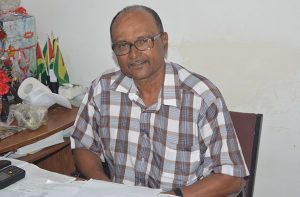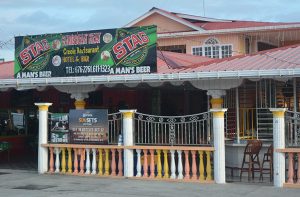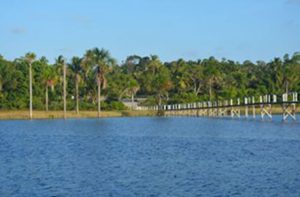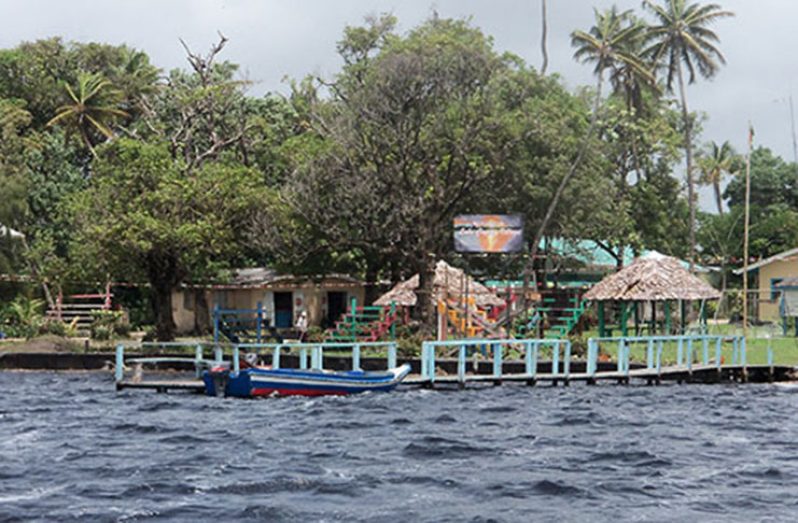— Essequibo Chamber on mission to sell Pomeroon-Supenaam as major tourism destination
IT is an area that includes a 60-mile coast that was once a sugar and cotton plantation and is now a sprawling area of rice cultivation with beautiful countryside, majestic lakes, enchanting creeks and a rich colonial history.

It is also home to reportedly the best coconuts in the world, Indigenous tribes and hospitable people, pristine forests and one of the deepest rivers in Guyana, the mighty Pomeroon River.
This is not an area in the interior, nor Berbice, nor the East or West Coast of Demerara; it was the first place in Guyana to be settled by the European colonisers and is called Pomeroon/Supenaam.
Nestled in the county of Essequibo, the 60-mile long coast before it got its current name Essequibo Coast was known as Dutch Guiana, and as time evolved, it became known as the Moroccan Coast and at one time, the Arabian Coast.
The Essequibo Coast today is home to the beautiful town of Anna Regina, which boasts malls, supermarkets, bazaars, health centres, government offices, entertainment spots and historic monuments.
The statue of slave leader Damon with cutlass in hand, situated next to the elegant Mayor and Town Council building in the heart of Anna Regina, stands out as a reminder of the resistance against slavery and oppression.
In the street leading to the Regional Democratic Council’s office, a chimney built at the height of the sugar industry during the Dutch era on the Essequibo Coast, still towers in the sky.
The picturesque lake communities of Mainstay/Whyaka, Tapacuma and Capoey are also found in the township of Anna Regina.

At Lake Mainstay lies one of the best resorts in Guyana, the Lake Mainstay Resort, while Tapacuma is the largest of the lakes on the Essequibo Coast.
There, the Dawa Pump Station, which provides irrigation water to a vast number of farmers on the Essequibo Coast, is stationed.
SCENES TO BEHOLD
At Capoey, fresh plants, towering mango trees, neatly laid-out benabs,a lush, surrounding savannah and the melodious sounds of singing birds greet visitors to the indigenous settlement.
The community can be accessed by road, but there are those who prefer to get there by means of the scenic, tranquil and mesmerising body of black water called the Capoey Lake.
This cool freshwater lake, whose water tastes like that from the artesian wells, is a scene to behold, and is among the natural wonders of the Essequibo county.
Further north of Anna Regina is the emerging town of Charity. It is home to a hospital, market, supermarkets, television station, modern malls and playgrounds.
The area is also a hub for fishing and boating.
At the tip of the community flows the Pomeroon River and along the river is the huge riverine community,The Pomeroon.

The Pomeroon was first occupied by the Cariwanna tribes some 3000 years ago.
They came into contact with the Spaniards in about the year 1420. About 100 years after, some Jews who were thrown out of Brazil took up residence here, and settled in the Pomeroon.
Then the Dutch came in 1620, and they not only settled in the Pomeroon, but also established settlements on the Essequibo Coast. It was the first colony in Guyana.
South of the town is the quiet village of Suddie. Once the administrative centre of the Essequibo Coast, it has a history that dates back to the Dutch occupation of Essequibo.
Today, a prominent feature of the village is the Suddie Hospital, the main hospital on the Essequibo Coast.
The sprawling hospital complex, which houses a public health building, a health centre and a rehabilitation centre, was built around 1840.
Prior to becoming a health centre, it used to house a huge building that overlooked the mighty Essequibo River. In those days, the building served as a fraternising club for the major estate owners, and they would usually meet there every month-end to chit chat, drink intoxicants or sip coffee.
MISSION
These are just a few of the wonderful sites and stories of Region Two. With these at its disposal, the Essequibo Chamber of Commerce has this year planned to market the region as a major tourism destination.
Chamber President, Dileep Singh, told the Guyana Chronicle that significant attention will be placed on working with the Ministry of Tourism to train those involved in the hospitality business, including bus drivers, taxi drivers and boat operators.
“We want tourists, both local and overseas, to get a good impression of the region when they visit and for them to tell the lovely story of Essequibo to their friends and their family and to everyone they come into contact with,” he said.

Singh, a seasoned businessman and the owner of a hotel and mall, pointed out that if every overseas tourist spends US$1000 on their visit, it will do a great lot for the economy of the region.
The region has been affected by a downturn in the rice industry.
Being an agricultural region, he said strong attention will be placed on agro-tourism which will entail tours of rice fields and mills, coconut plantations, and aquaculture stations.
The regional administration has also been building several parks at strategic areas in the region and these too will be promoted as health areas for family gatherings and relaxation.
Aside from these, the chamber also intends to collaborate with the regional administration to promote sport among young people and more concerts and cultural events to liven up the lives of both the young and not so young.
LOCAL CULTURE
Arnold Grandville, the owner of Grandville Hotel, Restaurant and Bar at Henrietta, one of 18 hotels on the Essequibo Coast, said not much is told about the culture and folklore of the Essequibo Coast and the Pomeroon.
“At Kabacaburi in the Pomeroon River, there is a big iron chain tied to a big tree and the chain leads to the middle of the river. At the bottom, I heard, is a Dutch ship that sank many years ago. And below I also heard stories of there being chests laden with gold coins, diamonds and bullions. I don’t think these stories have ever been verified, even though it has passed down from several generations. What we can do in the region is revive this great story and organise tours to the site. We also need to promote our culture and dance. Tourists come here to enjoy themselves and we must be able to show them the different Guyanese dances, including the cent, five cent, ten cent and dollar wine,” said Granville, who returned to invest in Guyana after working in The Bahamas for many years.

Another remigrant, but from Canada, Gossai Rambarran said reputable hotels on the Essequibo Coast should be promoted in local tourism magazines distributed overseas.
He has been promoting his establishment, Caribbean Health on facebook and used the opportunity of the interview with the Guyana Chronicle to encourage visitors, both local and overseas, to visit his hotel, restaurant and bar.
“At Caribbean Health, you can get the best of creole foods –from labba to deer meat to dhal and rice and coconut choka to bhara and biganne, we make it. And if you don’t want that we will get you cookup, metemgee and Spanish rice. You don’t have to look far; we also have the finest beverages to wash it down, but we always caution persons not to get drunk because with that happens, it is time to leave. No bad behaviour,” he warned with a smile.



.jpg)








